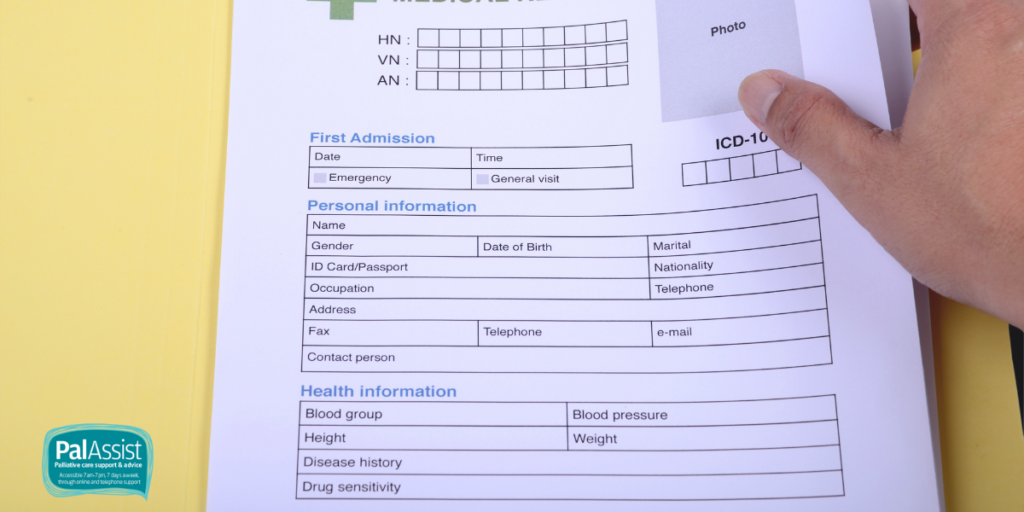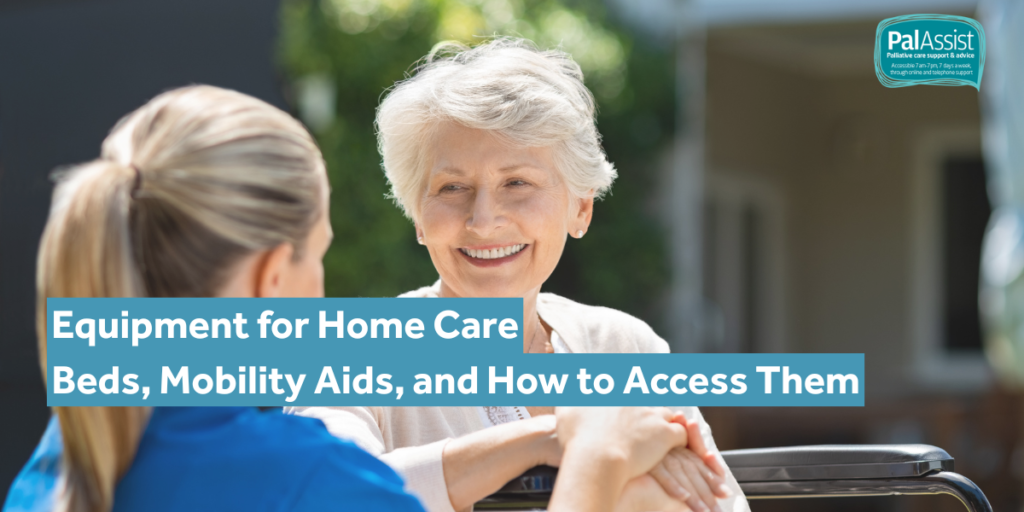Are you looking for the right hospital bed or mobility equipment for your loved one at home? These are challenging times, and we’re here to make it easier for you.
At PalAssist, we connect people with the assistive technology they need through registered NDIS providers and highly trained professionals.
If you’re unsure where to begin, don’t worry. This guide will make it easier to choose and access what you need. We’ll cover NDIS pathways, the Medical Aids Subsidy Scheme (MASS), and professional mobility aids referrals.
First, let’s look at the different types of equipment.
Choosing the Right Equipment: Hospital Beds, Mobility Aids, and Assistive Technology
Hospital beds, mobility aids, and assistive technology all serve different purposes, and the sheer variety can feel overwhelming at first. But once you understand the basics, you can work out what suits your situation.

You’ll find the main categories explained below.
Hospital Beds vs. Medical Beds
Hospital beds and medical beds aren’t the same, though people often use the terms interchangeably.
Hospital beds usually have electric controls to raise or lower the bed, with adjustable head and foot sections and built-in safety rails. Medical beds are simpler in comparison but still provide solid support for people recovering at home.
But if you value comfort and safety more, a home hospital bed is the obvious choice. These beds let carers adjust positions without straining themselves, which makes transfers much safer for everyone.
Mobility Aids and Assistive Technology
Mobility aids cover quite a bit of ground. You’ve got walkers, wheelchairs, hoists, transfer belts, and pressure cushions.
Each is designed to help with specific challenges, like some people might need a bit of balanced support, while others require full assistance with movement. The good news is there’s usually something suitable for everyone.
Assistive technology takes things a step further than basic mobility aids. This includes simple grab rails in the bathroom and smart home systems that let you control lights and doors more easily.
So if independence is a big priority, these tools will allow the person to manage tasks without relying on others all the time.
Choosing What’s Right for You
So, the question is: how long will you need the equipment, and do you want it customised?
Renting equipment works well if you only need it for a few months or want to try something before committing to a purchase. However, purchasing makes more sense when you’re in it for the long haul or need something customised to fit just right.
So it’s worth having a think about your timeline and how your needs might change before making a decision.
You’ll also want to consider a few practical things when choosing, including:
- How well can they move around right now?
- How much space do you have at home?
- Are there any necessary weight limits?
- Is someone available to help with transfers?
These details narrow down what will work safely in your home.
Getting advice from professionals can also prevent costly mistakes. They’ll recommend safe, suitable equipment, so you don’t risk new safety problems.
Next, we’ll look at how you can get funding and referrals in Queensland.
Step-by-Step Guide to Referrals and Funding for Equipment in Queensland
Getting equipment in Queensland involves a few steps. You’ll need a referral, an assessment, approval for funding, and then delivery of the actual equipment. Each of these steps has its own timeline and requirements.

Here’s how each part of the process works and what to keep in mind.
Step 1: Get a Mobility Aids Referral
A mobility aid referral is your starting point for accessing equipment through formal channels. Your GP or an allied health professional (like an occupational therapist or physiotherapist) will assess what you need and write a referral. This document will outline the person’s mobility challenges and recommend specific aids or helpful equipment.
The referral also connects you to suitable suppliers who can provide the equipment and, more importantly, to funding bodies that might cover the costs.
Without this step, you’ll struggle to access subsidised equipment through NDIS or MASS.
Step 2: Assessment and Prescription
Once you have a referral, the next step is a proper clinical assessment.
An occupational therapist or physiotherapist will evaluate how you move around, measure spaces in your home, and work out what assistive technology fits the situation. They’ll also consider things like doorway widths, room layouts, and whether you need help with transfers.
For some expensive equipment, like powered wheelchairs or special hospital beds, only a registered NDIS provider or accredited prescriber can handle the paperwork.
This requirement is there to make sure the equipment is safe and appropriate, though it does add that extra layer to the approval process.
Step 3: Funding Options in QLD
Queensland offers several funding pathways depending on your age, disability status, and care needs. Let’s look at the main funding sources and who they’re designed for.
NDIS (National Disability Insurance Scheme)
The NDIS provides support for Australians under 65 who have a permanent and significant disability. Once your plan is approved, it can include funding for mobility equipment, hospital beds, and other assistive technology, all through registered providers.
MASS (Medical Aids Subsidy Scheme)
For Queensland residents who don’t qualify for NDIS but still need equipment, MASS offers financial help. This program covers items such as wheelchairs, walking frames, and pressure care devices, with applications processed by your prescriber.
Home Care Packages (HCP)
Older Australians can use Home Care Packages to stay in their own homes for longer. These packages provide funds to hire or buy equipment, though you’ll need to balance them with other care costs, and waiting times can differ by location.
One important thing to note is that MASS and NDIS funding generally can’t overlap for the same equipment. So you’ll need to work with your assessor to determine which pathway suits your situation best.
Step 4: Delivery, Setup, and Maintenance
Once funding is approved, delivery timescales depend on whether the equipment is in stock and where you live. In general, metropolitan areas get faster service, while rural and regional Queensland can experience delays.
We highly recommend trialling a home hospital bed before final approval whenever possible. You can find providers that offer short-term rentals for this, so you can test if the bed suits your space and comfort.
Make the Right Choice for Home Care
Finding the right equipment can take time, but if you follow our guide, you’ll be covered. That said, don’t rush the process or skip professional assessments, as these steps protect you from costly mistakes.
If you’re still weighing up options or feeling unsure about where to start, we’re here to help.
Reach out to Pal Assist to discuss your needs, ask questions, or get guidance on accessing equipment and funding in Queensland.



